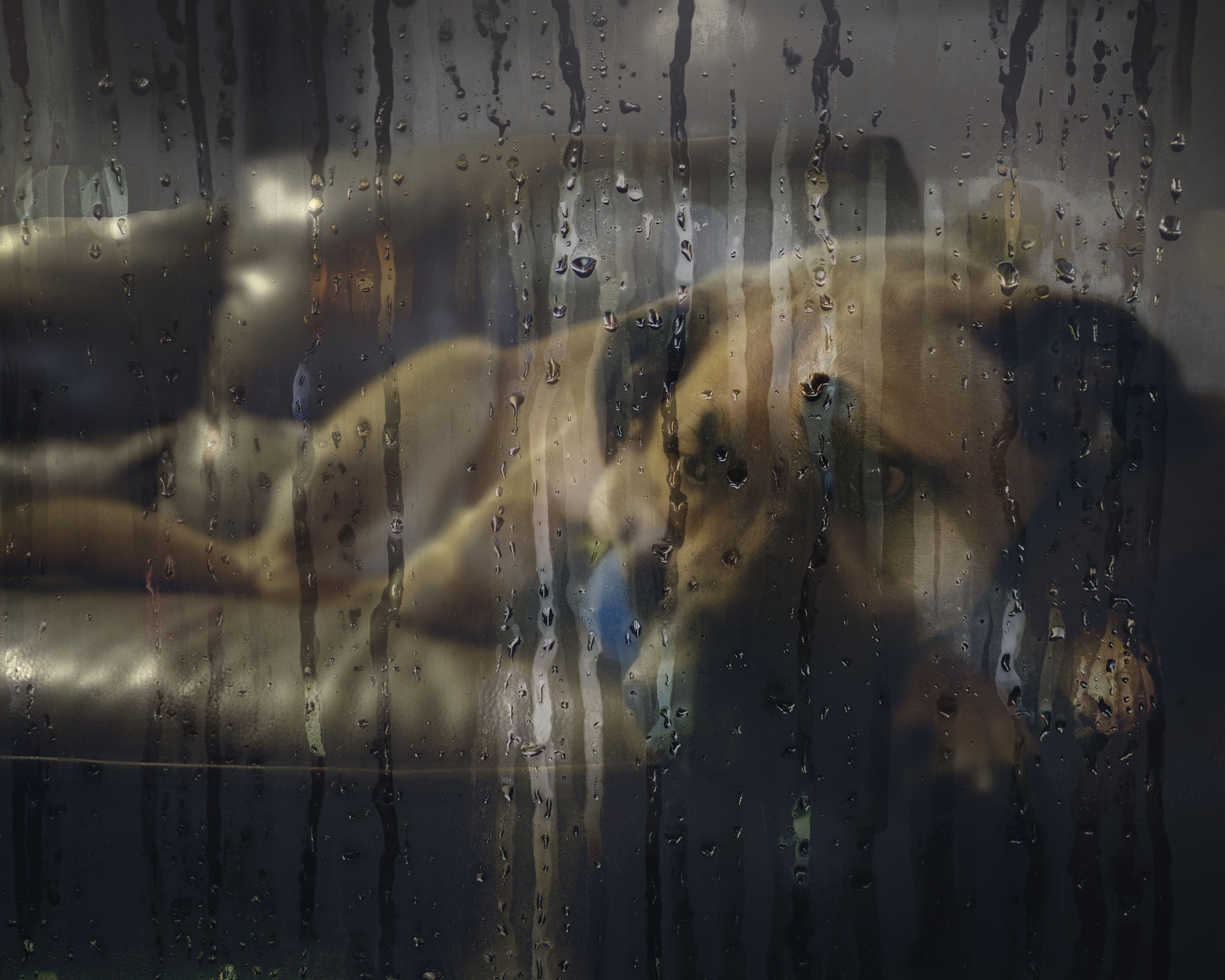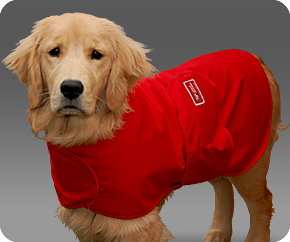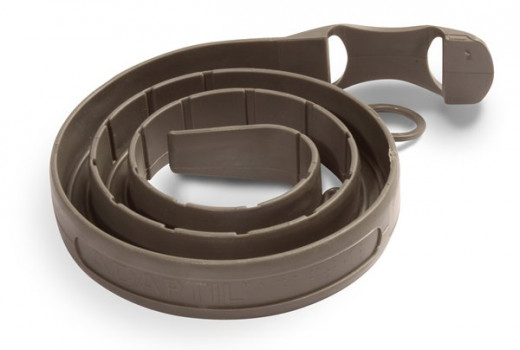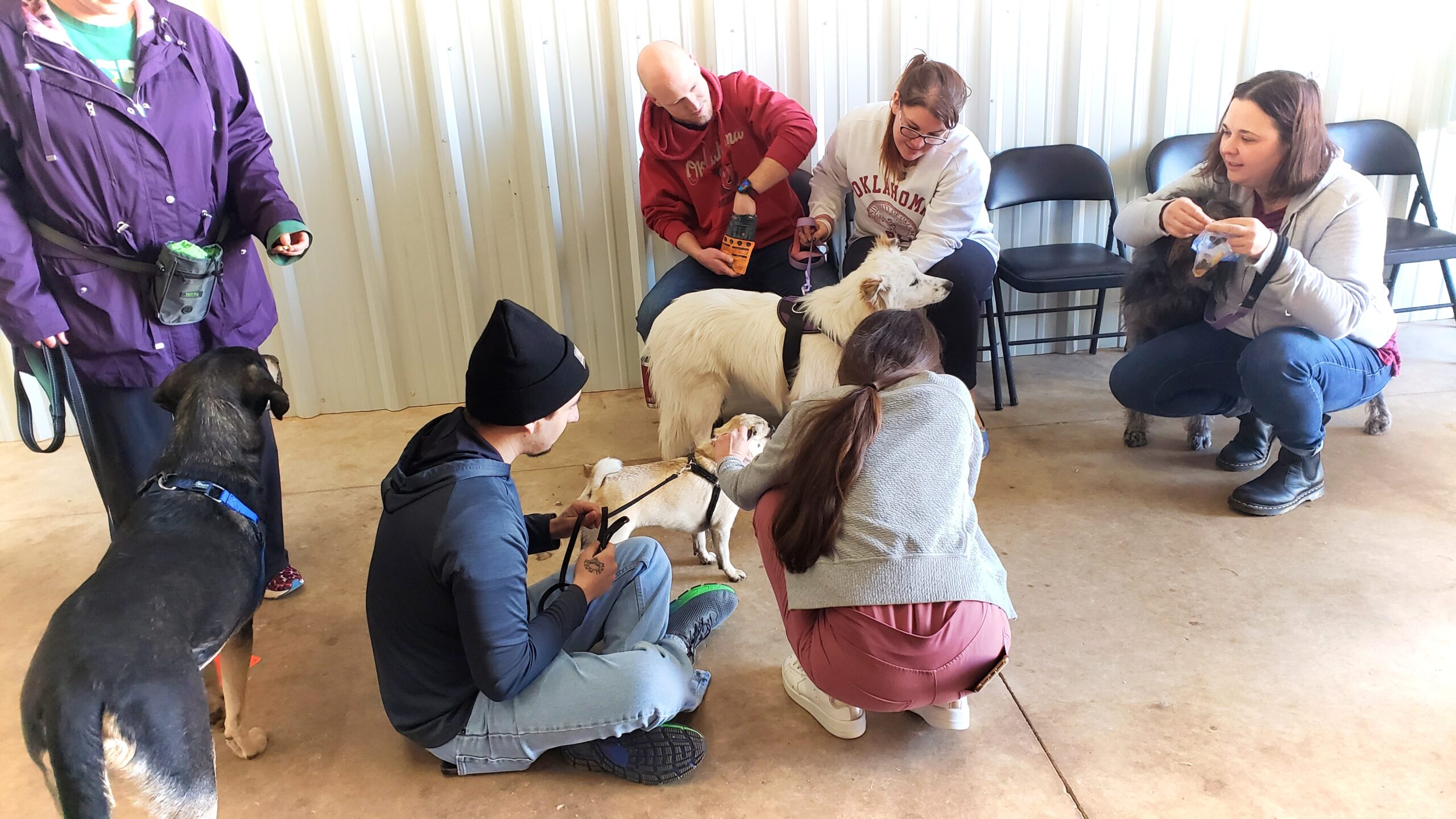
Storm season is upon us and this is a dreadful time of year for many of our canine companions. Even dogs who do not show direct anxiety of storms can still act funny when storms are about to roll in. We know how anxiety inducing it feels to watch your dog struggle with storm anxiety. You want to help your dog, but maybe you don’t know where to start.
Before we start looking at solutions, we have to dive into the potential reasons storm anxiety happens. Diving in deeper can help us understand how to help. When it comes to storm anxiety, all dogs are individuals. Since we can’t ask them which part of the storms cause them anxiety, we’ve had to turn to more in-depth research.

In this article, we’re going to talk about some of the current research on storm anxiety, potential theories for causes, and some potential solutions based on the research and theories.
Static Electricity

In a study done by N. Cottam and N. H. Dodman at Tufts Cummings School of Veterinary Medicine, researchers looked at the effectiveness of the Storm DefenderⓇ, a form fitting cape that dogs can wear to help with the static build up during storms that may be causing discomfort. The study consisted of a control group as well as a test group.
The researchers found that dogs who wore the static diffusing cape had a 63% decrease in their anxiety score from the baseline score. Those who wore the placebo cape had a 36% decrease in their anxiety scores from their baseline scores. While it looks like the Storm DefenderⓇ had some effect, researchers wondered why the placebo group reported improvement.
It could be that form fitting capes are ‘moderately therapeutic’ or that the placebo group experienced the placebo effect. Researchers said in their article that more research needs to be done to figure out why.
Anxiety Wraps
The Cottam and Dodman study inspired another by Cottam et al. on using the Anxiety Wrap to assess effectiveness on thunderstorm anxiety. The findings were promising.
Nineteen owners assessed their dogs. Fifteen of these owners reported the Anxiety Wrap as 25%-100% effective. Seven of the fifteen reported 50%-75% effectiveness and five reported a 75%+ rating.
Owner satisfaction wasn’t the only scoring system in place. Owners also scored their dog’s anxiety from a list of nine pre-defined behaviors. The researchers found that the mean anxiety score after the fifth use of the Anxiety Wrap was 47% lower than pre-treatment score.
It could be that a snuggly fit wrap helps alleviate some anxiety for dogs during thunderstorms. The limitations to the study talk about the lack of a placebo group, mostly because a placebo wrap wasn’t developed at the time.
Researchers talked about how a good study to follow this one would be to research the effectiveness of different amounts of pressure in the wrap. The amount of pressure needed to induce a calming effect in dogs is not known at this time.
There was also a possibility that the wrap inhibited locomotion for the dogs just enough to make it appear that the behaviors measured were lessened. Since many behaviors labeled as anxiety are motion based, if a dog’s motion is partially inhibited, it could appear that the anxiety is lessened. But this research is helpful in guiding other studies that can look at locomotion in wraps and figure out if adjustable pressure changes results.
Dog-appeasing Pheromone (DAP) Collars

A study by Landsberg et al. in 2015 looked at the use of Dog-appeasing pheromone (DAP) collars in relation to the sounds of thunderstorms. This was a lab experiment, which means the dogs who were studied were not in a home environment, but a controlled one where scientists could record observations on camera and analyze the data themselves.
This study used Beagles as the subject group and selected 24 subjects based on their baseline behaviors during a test without treatment. Twelve dogs were given the DAP collars and twelve dogs were given placebo collars. Each dog was provided with a small room during the thunderstorm simulation and each room provided a hide box for the dogs to seek shelter.
Researchers found the overall anxiety score of the dogs decreased significantly from their baseline scores ‘during’ and ‘post’ thunderstorm simulation for the dogs who wore the DAP collars. There was no significant improvement on the placebo group from baseline test days. The researchers also noted that the dogs wearing the DAP collar used their hide boxes more than the placebo group.
This study does indicate that storm phobia could have a heavy association to noise sensitivity. While that might seem obvious to us, it is important to note that in the past, trainers have used techniques to help with storm phobia based on noise alone by pairing the aversive sounds at a low volume with good outcomes, like treats or play, to help the dogs build a better association. However, this technique alone does not seem to be enough for most storm phobic dogs. There are reasons to help teach your dog not to fear sudden noises and loud sounds using this technique. We often do this in our training lessons to help our dogs overcome fears. But for most cases, there is more to storm phobia than noise alone.
Can you accidentally reward being afraid of storms?

The last study we’ll address here is by N. A. Dreschel and D. A. Granger from Pennsylvania State University done in 2005. This article’s abstract tells the reader about how the researchers were interested in studying the effects of the home environment in relation to storm stress.
The researchers measured the cortisol levels in both the human caregivers and the dogs through their saliva during a stressful event and took note on whether the reaction of the human had any bearing on the dog’s reaction to the storm. The researchers found there were no effects of the owners’ behavior or the quality of the dog-owner relationship on the dogs’ reactivity.
Lots of people ask us if they can accidentally reward their dog’s fear by trying to pet them or give them things they like. This study seems to imply that in the presence of fear, trying to soothe dogs does not encourage them to be more afraid. However, the research did show that having another dog in the home of the storm phobic dog was linked to less pronounced reactivity and more rapid recovery. So if your storm phobic dog has a dog buddy at home, they are more likely to have an easier time during storms.
Physical Effects of Storms and Age

Overall, storm anxiety is a complex topic that’s still continuing to be researched. There is still a lot more to learn. Storms include many sensory experiences for our dogs that we may not acknowledge ourselves, even if they also affect us. There is sound, barometric pressure, and static.
Many dogs who have a history of storm anxiety start to show signs during barometric pressure changes. Is this because they learn that the air pressure changes right before big noises happen that spook them, or because the pressure change itself is aversive in some way?
Thinking about our own reactions to storms can give us some clues as to what might be going on with our canine companions. Many humans start to experience joint pain or migraines during pressure changes. If dogs are having these issues, it can be hard for them to tell us what’s going on without further digging.
Many dogs anecdotally develop storm anxiety later in life during the start of their senior years, so pain could be a factor to consider. It’s very likely that there are multiple elements at play when looking at an individual dog, and some dogs may not have issues with all parts of a thunderstorm.
Consulting your Veterinarian

When looking for solutions to storm anxiety, your veterinarian is a trusted ally. Having a dog who has a mild fear of storms is one thing, but the key is knowing what is and is not normal. Quality of life is important to all of us as pet owners.
Trying some tested solutions, like a DAP collar or a form fitting wrap that is made for dogs could help in mild cases or make severe cases more manageable. But looking to your vet is key if you’re wondering whether to consider any treatments to help relieve anxiety, or would like more information on further developing research.
Training Solutions Can Help Anxiety

We hope this information provides some relief, even if it might leave you with more questions. If you have a dog who not only has storm anxiety, but general anxiety issues you’d like addressed, we are always happy to help by providing an evaluation.
Our goal when helping our clients who have dogs with anxiety problems is to give honest answers about what relief can look like and how dogs with anxiety can thrive, not just survive.
Having a multi-faceted approach is important for our dogs with anxiety and we have helped many dogs learn how to thrive in their environments. If you have a dog who is struggling or know someone who does, message us. We’d love to help.

References
Cottam, N. et al. (2013, May/June). The effectiveness of the Anxiety Wrap in the treatment of canine thunderstorm phobia: An open-label trial. Academia.edu. Retrieved May 30, 2022, from https://www.academia.edu/17429502/The_effectiveness_of_the_Anxiety_Wrap_in_the_treatment_of_canine_thunderstorm_phobia_An_open_label_trial?from=cover_page.
Cottam, N., Dodman, N. H. (2009, March). Comparison of the effectiveness of a purported anti-static cape (the Storm DefenderⓇ) vs. a placebo cape in the treatment of canine thunderstorm phobia as assessed by owners’ reports. Academia.edu. Retrieved May 27, 2022, from https://www.academia.edu/17429472/Comparison_of_the_effectiveness_of_a_purported_anti_static_cape_the_Storm_Defender_vs_a_placebo_cape_in_the_treatment_of_canine_thunderstorm_phobia_as_assessed_by_owners_reports?auto=citations&from=cover_page.
Dreschel, N. A. (2005, Dec.). Physiological and behavioral reactivity to stress in thunderstorm-phobic dogs and their caregivers. Sciencedirect.com. Retrieved May 27, 2022, from https://www.sciencedirect.com/science/article/abs/pii/S0168159105001152.
Landsberg, G. M. et al. (2015, Sept.). Dog-appeasing pheromone collars reduce sound-induced fear and anxiety in beagle dogs: a placebo-controlled study. Bvajournals.onlinelibrary.wiley.com. Retrieved May 27, 2022, from https://bvajournals.onlinelibrary.wiley.com/doi/pdfdirect/10.1136/vr.103172.

